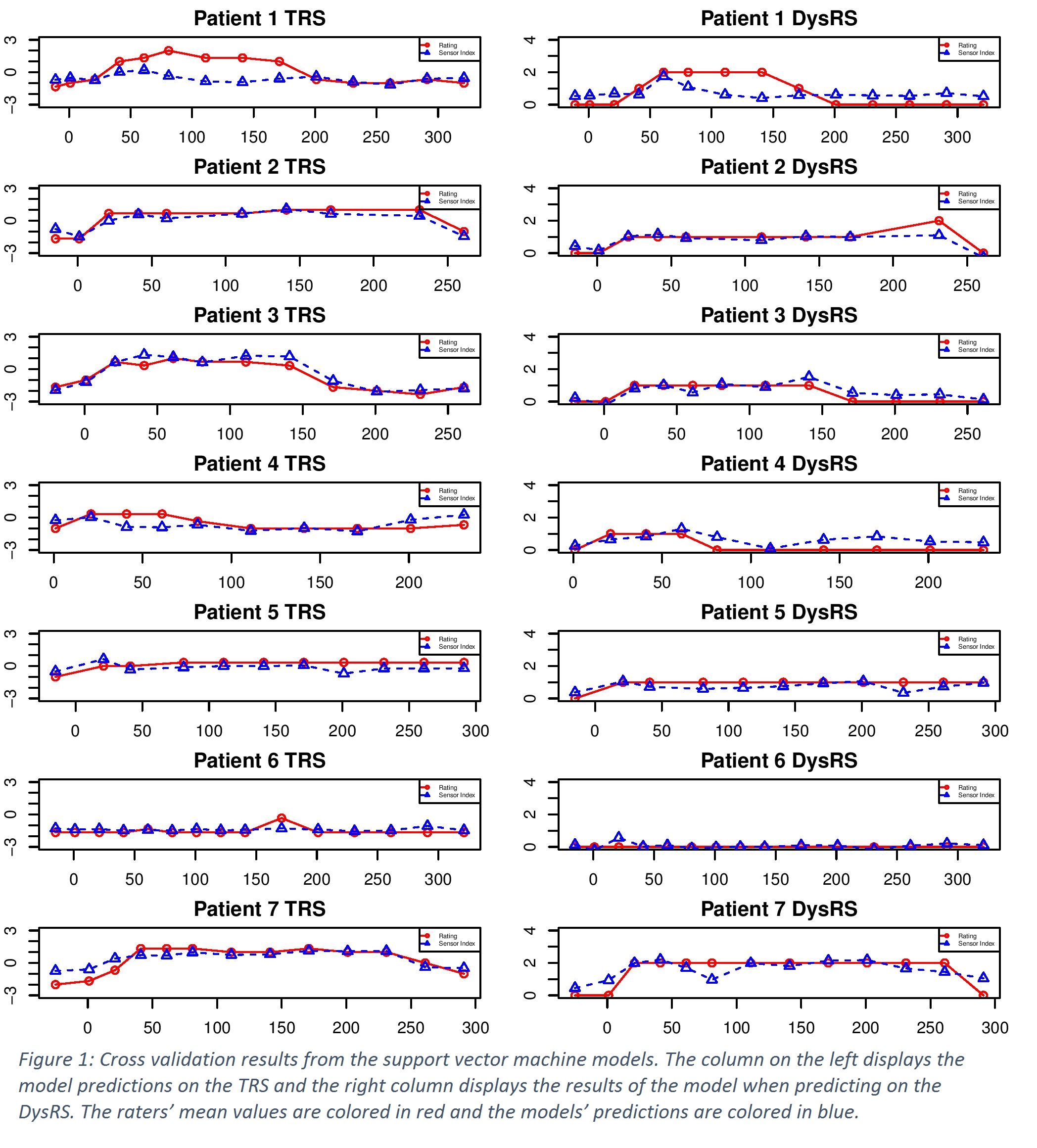Session Information
Date: Tuesday, June 6, 2017
Session Title: Technology
Session Time: 1:45pm-3:15pm
Location: Exhibit Hall C
Objective: The aim of this study was to investigate the concurrent validity of an objective gait measure for assessment of motor states in advanced Parkinson’s disease (PD) patients.
Background: Five million people suffer from Parkinson’s disease (PD) worldwide. The use of wearable sensors could help monitor disease progression and medication efficacy.
Methods: A single center, single dose, open label clinical trial was conducted in Uppsala, Sweden in 2015. Patients repeatedly performed a walk task while wearing 3D accelerometry and gyroscope sensor units on all four limbs. Assessments were made once before dose administration, once at time of administration, and at pre-specified timepoints until the medication effect had worn off. Each test took approximately 15 seconds and consisted of a 2.5 meter straight walk, which was repeated three times by making 2 U-turns in the process. The patients were also video recorded and the videos were rated by three movement disorder experts according to a Treatment Response Scale (TRS), ranging from -3 (very Off) to +3 (very dyskinetic) and a Dyskinesia Rating scale (DysRS), ranging from 0 (no dyskinesia) to 4 (severe dyskinesia).
For the predictive modelling, 32 features from each sensor were extracted together with 24 features that quantified the differences in symmetry between the sensors (152 total features). Principal component analysis was employed on the features of each sensor and the principal components of the four sensors together with the symmetry features were used as predictors in two separate support vector machine (SVM) models. One model mapped the features to the TRS scale and the other to the DysRS scale.
Results: Preliminary results from 7 patients showed good predictive ability of the SVM models in a leave-one-individual out cross-validation setting. The predictions on the TRS scale had correlation of 0.79 to the experts’ mean ratings and Root Mean Square Error (RMSE) of 0.70. The predictions in the DysRS scale had correlation of 0.79 and RMSE of 0.47. The results for the seven patients can be seen in figure 1.
Conclusions: The results of the study indicate that the use of wearable sensors when performing walking tasks can generate measurements that have a good correlation to subjective expert assessments. This could be useful during individualized evaluation of symptoms and treatments.
To cite this abstract in AMA style:
I. Thomas, F. Bergquist, R. Constantinescu, D. Nyholm, M. Senek, M. Memedi. Using measurements from wearable sensors for automatic scoring of Parkinson’s disease motor states [abstract]. Mov Disord. 2017; 32 (suppl 2). https://www.mdsabstracts.org/abstract/using-measurements-from-wearable-sensors-for-automatic-scoring-of-parkinsons-disease-motor-states/. Accessed December 19, 2025.« Back to 2017 International Congress
MDS Abstracts - https://www.mdsabstracts.org/abstract/using-measurements-from-wearable-sensors-for-automatic-scoring-of-parkinsons-disease-motor-states/

